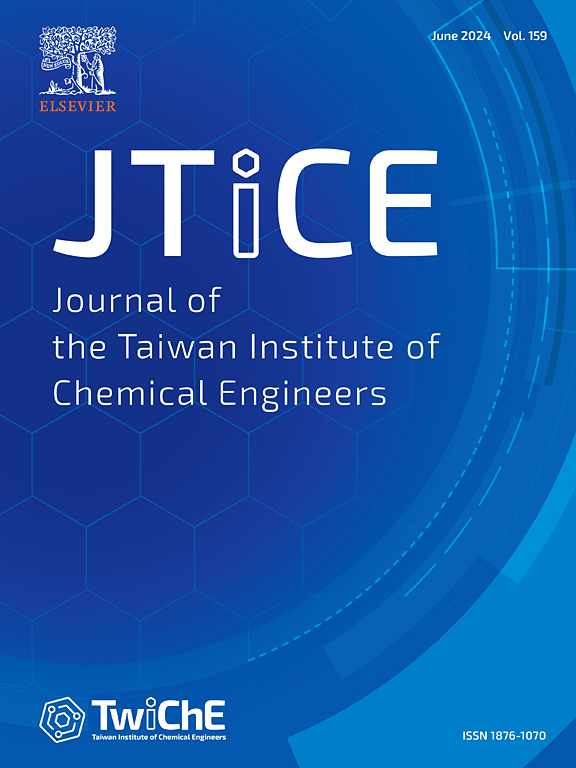Novel sandwich like interfacial engineering of Cu NPs on CuAl2O4 anchored Bi4O5Br2 nanoflower Z-scheme nano-heterojunction for enhanced photocatalytic degradation of doxycycline and tetracycline
IF 5.5
3区 工程技术
Q1 ENGINEERING, CHEMICAL
Journal of the Taiwan Institute of Chemical Engineers
Pub Date : 2025-01-22
DOI:10.1016/j.jtice.2025.105952
引用次数: 0
Abstract
Background
The contamination of aquatic systems with antibiotics poses a significant threat to both human health and aquatic ecosystems, disrupting microbial communities, harming aquatic organisms, and contributing to the proliferation of antibiotic-resistant bacteria that compromise public health and medical treatment efficiency. In this study, the antibiotics doxycycline (DOX) and tetracycline (TET), widely used pharmaceuticals, are highlighted as complex contaminants that not only persist in the environment but also act as pollutants causing adverse effects.
Methods
This study employed interfacial engineering of Cu nanoparticles on CuAl2O4 to construct a Z-scheme heterojunction with varying concentrations of Bi4O5Br2 (10, 20 and 30%) using an ultrasonication-assisted co-precipitation method. The resulting CuAl2O4- Bi4O5Br2 nanocomposites (CCB NCs) demonstrated exceptional stability and photocatalytic efficiency under visible light irradiation, leveraging enhanced charge separation and transfer mechanisms to achieve superior degradation of DOX and TET.
Findings
The CCB NCs demonstrated remarkable photocatalytic degradation efficiencies of 95.2, 95.7 and 95.4 for TET, DOX and their combination which showcased the enhanced stability and reusability. The sandwich-like interfacial engineering of Cu nanoparticles on CuAl2O4 anchored with Bi4O5Br2 nanoflowers facilitated Z-scheme nano-heterojunction formation, contributing to a larger surface area, narrow bandgap energy, high visible light absorption, and reduced recombination rates. PL and EIS analyses validated the superior charge separation and transfer abilities of the NCs. Structural, morphological, and compositional analyses using XRD, SEM, TEM, and XPS confirmed the material's characteristics. The photocatalytic mechanism was elucidated through ESR and radical scavenging experiments. The degradation pathway of TET and DOX was proposed via GC–MS/MS, and ECOSAR analysis confirming the nontoxicity of intermediates and end products to algae, fish, and daphnia. These findings underscore the potential of CCB NCs for real-time wastewater treatment applications and manufacturing innovation in future.

求助全文
约1分钟内获得全文
求助全文
来源期刊
CiteScore
9.10
自引率
14.00%
发文量
362
审稿时长
35 days
期刊介绍:
Journal of the Taiwan Institute of Chemical Engineers (formerly known as Journal of the Chinese Institute of Chemical Engineers) publishes original works, from fundamental principles to practical applications, in the broad field of chemical engineering with special focus on three aspects: Chemical and Biomolecular Science and Technology, Energy and Environmental Science and Technology, and Materials Science and Technology. Authors should choose for their manuscript an appropriate aspect section and a few related classifications when submitting to the journal online.

 求助内容:
求助内容: 应助结果提醒方式:
应助结果提醒方式:


